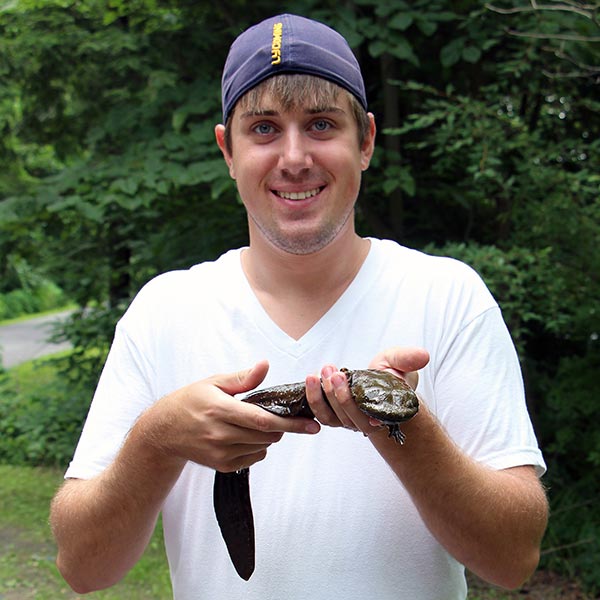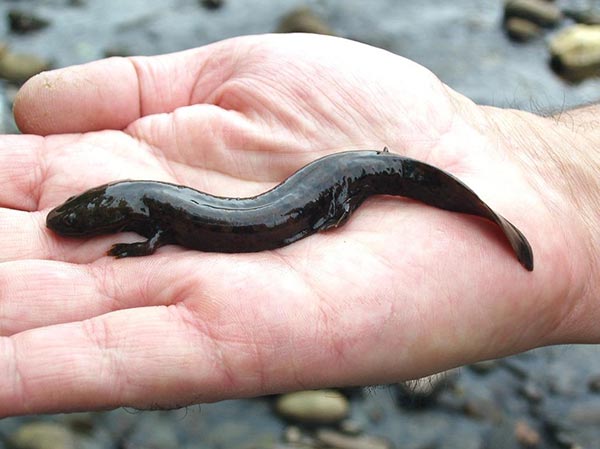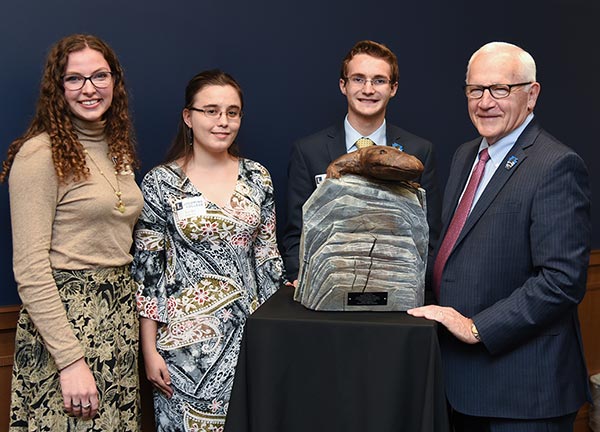You are here:
Hellbender Conservation

Since 2006, the Lycoming College Clean Water Institute (CWI) has been studying and working to conserve the Eastern hellbender, a species of giant salamander native to the eastern United States. Hellbenders are excellent indicators of water quality, as they require clean, well-oxygenated streams to thrive. However, hellbender populations have declined over the last century due to habitat degradation from land development as well as pollution. A portion of CWI’s efforts aim to improve the health and habitat of hellbenders, as well as raise awareness about their ecological significance. The slimy creature has found its way into the hearts of many CWI interns over more than two decades and therefore is often dubbed as the unofficial mascot of Lycoming College.
Research and Restoration
The Clean Water Institute conducts extensive research and monitoring to better understand hellbenders and the places they call home. Faculty and students track populations, collect data on water quality parameters, and study the impact of human activities on these fascinating creatures. Through this research, and in collaboration with other organizations, government agencies, and other institutions, CWI has identified threats and developed strategies for conservation and restoration.

CWI actively engages in recovery programs with the intent to augment populations and restore habitats. These projects involve activities such as egg and larvae collection (for rearing in captivity), installation of natural and artificial cover rocks (to provide adequate shelter for juvenile hellbenders after release), and monitoring with microchips (to observe use of enhanced habitats and movement into or out of the release sites).
Education and Outreach
The Clean Water Institute is committed to educating the public about the importance of hellbender conservation and water quality. Our students and faculty have presented to local communities, school districts, environmental organizations, and the greater scientific community. By raising awareness and fostering a sense of stewardship, CWI hopes to inspire individuals to take action for the protection of hellbenders and their habitats.
The Pennsylvania State Amphibian

When a group of high school students with Chesapeake Bay Foundation’s Student Leadership Council learned about the plight of the hellbender, they proposed a bill to make the animal the Pennsylvania state amphibian. Because of their extensive work with hellbenders, Lycoming College students helped draft the bill, and Senator Gene Yaw ’70 championed the movement. In 2019, it was passed, helping to strengthen efforts to conserve and protect hellbenders and advocate for clean water in Pennsylvania.
“Raise a Little Hellbender”
With a long-standing history of research, habitat restoration, and public outreach, the Clean Water Institute continues to make significant contributions to hellbender conservation. Their dedication to preserving these unique salamanders and their habitats is a testament to their commitment to environmental stewardship and the long-term sustainability of aquatic ecosystems.